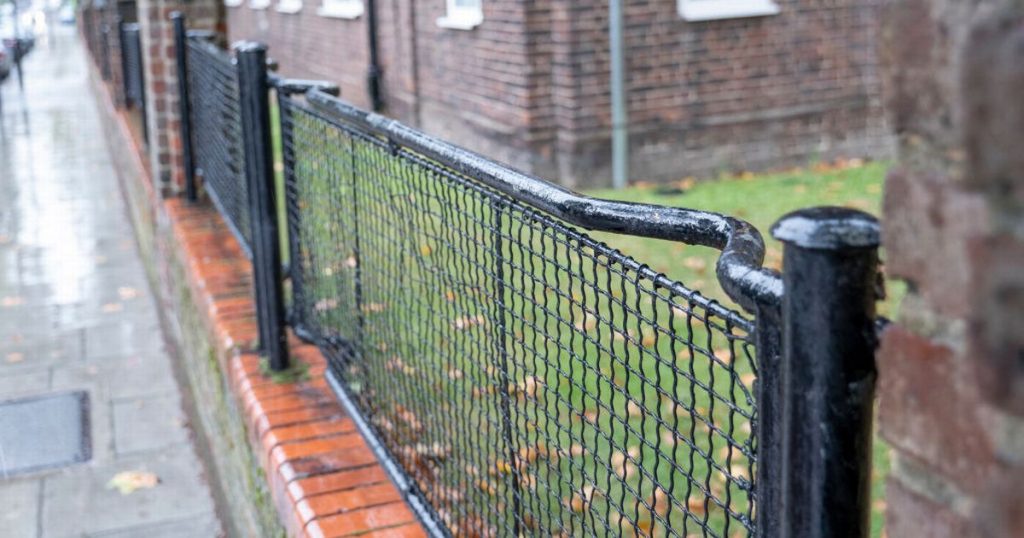A historian has recently revealed the true purpose behind street railings with kinks in them, shedding light on their important role during World War II. These railings, which may have gone unnoticed by many, were actually emergency stretchers used by Air Raid officers to carry wounded civilians during the Blitz. Thousands of these stretchers were produced for the war effort, designed with simplicity and efficiency in mind. The distinctive kink in the poles allowed them to be easily picked up and carried, making them essential for saving lives during the dark days of the war. Many street railings were removed during the war for metal conservation, leaving behind short metal stumps that were repurposed as the bases for these emergency stretchers.
The emergency stretchers made from these railings were repurposed when the time came to rebuild the city post-war. The absence of railings on many streets due to metal redistribution during the war led to the decision to reuse the old ARP stretchers. As the city was being rebuilt and damaged areas were being tidied up, these stretchers played a significant role in saving hundreds of lives during the war. The unique history behind these seemingly ordinary railings left many people mindblown upon discovering the story behind them. This newfound perspective on these street railings has led to a deeper appreciation for the history and significance they hold, marking a pivotal moment in British history.
In a TikTok video, historian Alice Loxton, also known as @history_alice, shared the fascinating background of these street railings. She explained that these railings served as critical tools for emergency response during the Blitz, allowing wounded civilians to be transported to safety. The design of the stretchers, with two poles flanking a wire mesh, was simple yet effective, making them easy to clean, especially in scenarios like gas attacks. The production of these stretchers on a large scale was cost-effective and practical, ensuring that they could be readily available for use during air raids. The revelation of this practical yet life-saving purpose behind these railings captured the attention of many history enthusiasts, who were amazed by this untold piece of London’s wartime history.
The railings with kinks in them held a vital role in London’s World War II history, serving as emergency stretchers to carry wounded civilians during the intense bombing raids. The simplicity and efficiency of these stretchers made them indispensable during times of crisis, with their design allowing for quick and easy transport of injured individuals. The reuse of these stretchers in the city’s post-war rebuilding efforts highlighted their significance in saving lives and aiding recovery after the devastation of the war. The newfound appreciation for these street railings showcases how seemingly ordinary objects can hold profound historical significance, offering a unique perspective on the impact of war on cities and communities.
The story behind the ‘Smart Alec’ phrase traces back to the stretchers made from London street railings during World War II, showcasing the practical ingenuity of wartime efforts. These emergency stretchers, repurposed from railings removed for metal conservation, reflect the resourcefulness and adaptability of citizens during times of crisis. The legacy of these stretchers and their role in history sheds light on the resilience and unity of communities in facing adversity. The revelation of this historical background behind everyday objects like street railings serves as a reminder of the enduring impact of war on society and the remarkable stories that lie hidden in urban landscapes. The untold history of these railings with kinks now stands as a testament to the courage and innovation displayed by individuals during wartime, leaving a lasting impression on those who discover the hidden stories behind familiar city fixtures.


